Software Development
Every Place That Uses Daylight Saving Time *
* And every place that doesn't
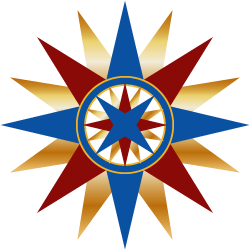 by Joe Honton
by Joe Honton
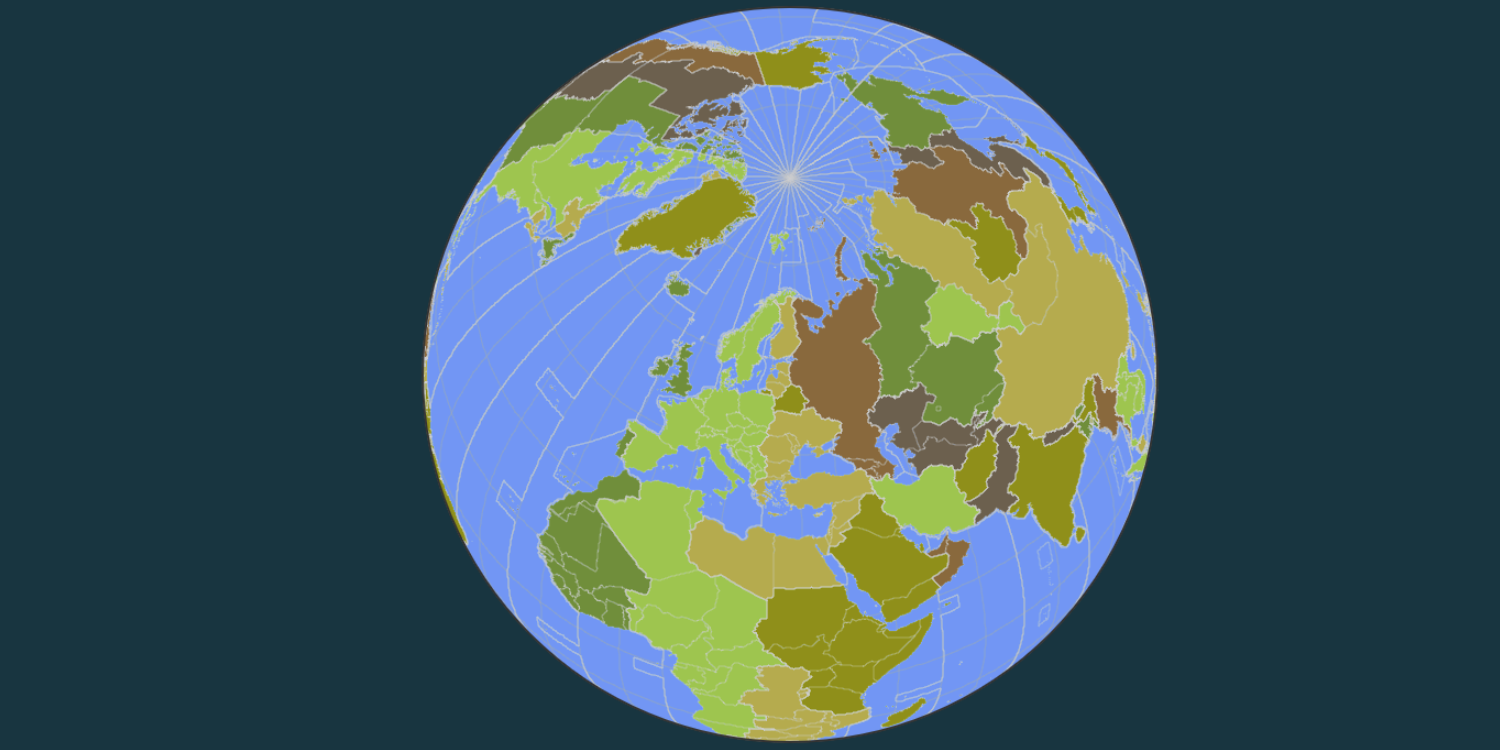
Software developers work with dates and times on a regular basis. We understand the rules for determining leap years, the methods for calculating time spans, and the proper use of time offsets from Coordinated Universal Time.
Unfortunately, when it comes to summer-time versus winter-time there's a big gap in our understanding. Relying on the time broadcast from the nearest cell-phone tower may be good enough for lay people, but programmers need to know a lot more.
TL;DR — Download daylight saving time data files for 2021, in JSON format, from the daylight-saving-time-2021 GitHub repo.
Standard time zones
We know that standard time is nominally sliced into 24 zones, each of 15 degrees longitude. But the true list of standard times is not that clean, because many places have decided to stretch and pull time zone borders to fit administrative borders. This has given rise to time zones that are unusually wide, such as China, whose eastern limit at 73.5°E, and western limit at 134.5°E, spans four nominal time zones.
Other countries have adopted time zones that don't neatly fit the usual one hour increment. For example, India standard time is 30 minutes different from neighboring Pakistan and Bangladesh. And strange as it may seem, Nepal standard time is set at the 45 minute mark, meaning clocks in Kathmandu are two hours and fifteen minutes behind its neighbor to the north.
Furthermore, in the South Pacific, some islands have decided to align their clocks with the east and others with the west. They've contorted those 24 nominal slices into 26 actual zones. This may seem odd to mainlanders, but it does prevent the awkwardness and confusion of dealing with trading partners whose clocks and calendars might otherwise be different.
And then there's daylight saving time. This perplexing idea and its non-uniform set of rules has been generating controversy ever since it was first tried in 1916.
Nobody likes the idea of getting out of bed at 4 o'clock in the morning, even if that's when the sun rises. So why not get up at 5 o'clock, and use that extra hour of summer daylight to do some extra work in the evening.
At different times over the past century, daylight saving time has been enacted or repealed by countries which have justified their reasoning in a variety of ways: wartime production schedules; the availability and price of oil; computerized electoral machines that couldn't be reprogrammed; severe drought drying up hydroelectric dams; better use of national tourist attractions; accommodating the daylight fasting rules of Ramadan. And in one case — favoring restaurant diners over beach-goers!
The rules keep changing. Savvy programmers must take defensive action in whatever implementation they choose. Here's a round-the-world examination of the daylight saving rules for 2021.
South Pacific
UTC+14: Kiribati is directly south of Hawaii, but for political reasons does not follow Hawaii's UTC-10 timezone. Instead, it has chosen to align its days with most of the other south Pacific countries. This puts it exactly 24 hours ahead of Hawaii all year long. Kiribati does not observe daylight rules.
UTC+13: The country of Samoa begins daylight time (WSDT) on the last Sunday of September, setting their clocks to UTC+14, and resumes standard time (WSST) on the first Sunday of April, in the following year. The time zone abbreviation "WS" comes from the country's former name "Western Samoa". Note carefully though, that American Samoa, the nearby islands that are US territories, are in UTC-11, making the time difference between these two close neighbors either 24 or 25 hours.
UTC+12:45 The Chatham islands, which are New Zealand territories, follow the same "last Sunday of September / first Sunday of April" summertime rule as the rest of New Zealand. Because it is so far from the main islands of New Zealand, standard time is set to UTC+12:45, while daylight time is set to UTC+13:45.
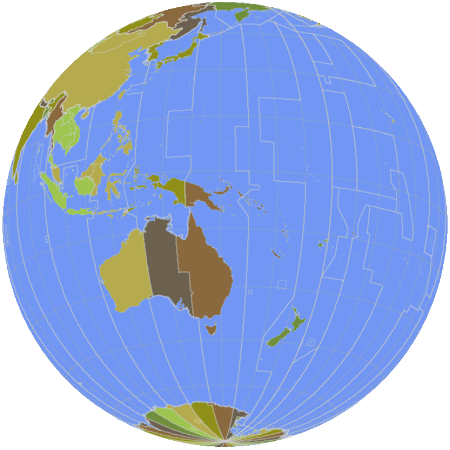
UTC+12: Auckland uses New Zealand Daylight Time (NZDT) [UTC+13] during the summer, from the last Sunday of September to the first Sunday of April. It resumes New Zealand Standard Time (NZST) during the winter.
UTC+12: Fiji is in the same timezone as New Zealand, but uses different daylight rules, which have changed frequently in recent years. The rules for 2021 are: daylight time [UTC+13] only during the brief period from the second Sunday of November to the first Sunday after January 12th. Standard time [UTC+12] the rest of the year.
UTC+12: Tarawa, Majuro, Kwajalein, Nauru, Funafuti, Wake, Wallis. These islands do not observe daylight time.
UTC+11: New Caledonia observed daylight time in 1977-78, 1978-79, and again in 1996-97, but has remained on New Caledonia standard time (NCST) since then.
UTC+11: Vanuatu observed daylight time in 1973-74 and between 1983-92, but has remained on Vanuatu time (VUT) since then.
UTC+11: The sovereign Solomon Islands (SBT) have never observed daylight rules.
UTC+11: Norfolk Island, an Australian territory, follows the Australian rules, advancing the clock at the beginning of summer [UTC+12] on the first Sunday in October, and resuming standard time the first Sunday in April, the following year.
UTC+10:30 Lord Howe Island, part of New South Wales, advances the clock by a half hour to UTC+11:00 on the first Sunday in October, and resumes standard time the first Sunday in April, the following year.
UTC+10: Guam and the Northern Mariana Islands, US territories, use Chamorro Standard Time (ChST) all year long. They are the first Americans to observe the sun rise, 21 hours before their neighbors to the east on American Samoa.
UTC+10: Australian Eastern Daylight Time (AEDT) [UTC+11] begins on the first Sunday in October. Australian Eastern Standard Time (AEST) resumes on the first Sunday in April, the following year. Queensland, in the northern half of the time zone does not observe daylight time; New South Wales, Victoria, and Tasmania do.
UTC+9:30 Australian Central Daylight Time (ACDT) [UTC+10:30] begins on the first Sunday in October. Australian Central Standard Time (ACST) resumes on the first Sunday in April, the following year. The Northern Territory does not observe daylight time; South Australia does.
UTC+8:45 Australian Central Western Standard Time (ACWST) is in the no-mans land from Eucla to Cocklebiddy. It does not observe daylight rules.
UTC+8: Australian Western Standard Time (AWST) observed daylight rules variously between 1971-75, 1983-84, 1989-92 and 2006-07, but presently does not observe daylight time.
East Asia
Most East Asian countries do not use daylight saving time. For reference, here are the principal time zone names.
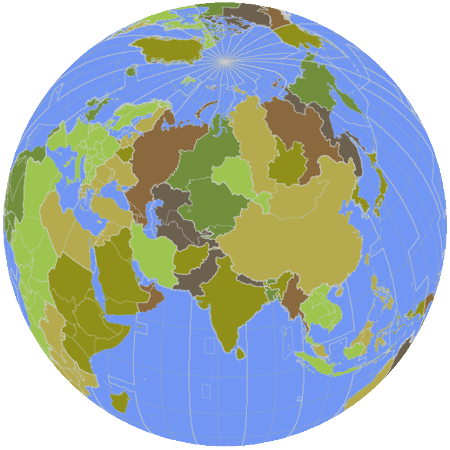
UTC+9: In Japan (JST). In North Korea and South Korea (KST). In eastern Indonesia (WIT).
UTC+8: China Standard Time (CST) is observed throughout all of China, Taipei, Macau, and Tibet.
UTC+8: In Mongolia, Ulaanbaatar Time (ULAT) and Choibalsan Time (CHOT) observed daylight time as recently as 2016, but presently does not.
UTC+8: In Hong Kong (HKST). In Taipei and Macau (CST). In the Philippines (PHT). In central Indonesia (WITA). In Brunei (BNT). In Malaysia (MYT). In Singapore (SGT).
UTC+7: In Mongolia (HOVT). In western Indonesia (WIB); Thailand, Vietnam, Myanmar, Cambodia, Laos use Indochina Time (ICT).
UTC+6:30 In Myanmar (MMT). In Keeling Islands, Cocos Islands Time (CCT).
UTC+6: In easternmost China, the Uyghurs of Ürümqi use the unofficial "Xinjiang Time" in parallel with China Standard Time.
South Asia
UTC+6: In Bangladesh (BDT). In Bhutan (BTT). In the Chagos Archipelago (IOT).
UTC+5:45 Nepal Time (NPT).
UTC+5:30 All of continental India (IST). In Sri Lanka (SLST).
UTC+5: Pakistan (PKT), observed daylight time as recently as 2009, but presently does not. In Maldives (MVT).
UTC+4: Mauritius (MUT) observed daylight time from March to October as recently as 2009, but presently does not.
Russia
UTC+12: In the Russian Far East, Petropavlovsk-Kamchatski Time (PETT) and Anadyr Time (ANAT).
UTC+11: In the Russian Far East, Magadan Time (MAGT) and Sakhalin Time (SAKT).
UTC+10: In the Russian Far East, Vladivostok Time (VLAT).
UTC+9: In Eastern Siberia, Yakutsk Time (YAKT).
UTC+8: In Central Siberia, Irkutsk Time (IRKT).
UTC+7: In Western Siberia, Krasnoyarsk Time (KRAT) and Novosibirsk Time (NOVT).
UTC+6: In Southwestern Siberia, Omsk Standard Time (OMST).
UTC+5: In the Urals, Yekaterinburg Time (YEKT).
UTC+4: In the Middle Volga, Samara Time (SAMT).
UTC+3: In the Lower Volga, Moscow Standard Time (MSK). Note that prior to 2014 "Moscow Standard Time" was UTC+4.
UTC+2: In the Baltics, Kaliningrad Time (KALT).
Central Asia
UTC+6: East Kazakhstan, Alma-Ata Time (ALMT). In Kyrgyzstan (KGT).
UTC+5: West Kazakhstan, Qyzylorda Time (QYZT). In Tajikistan (TJT). In Turkmenistan (TMT). In Uzbekistan (UZT).
UTC+4:30 In Afghanistan (AFT).
UTC+4: Armenia (AMT) experimented with daylight time from March to October in 2011 only. Azerbaijan (AZT) observed daylight time from March to October as recently as 2015. Georgia (GET) observed daylight time as recently as 2004. None of these presently use daylight time.
Middle East
UTC+4: The United Arab Emirates and Oman use Gulf Standard Time (GST).
UTC+3:30 In 2021, Iran begins Iran Daylight Time (IRDT) [UTC+4:30] at the end of March 21st, and resumes Iran Standard Time (IRST) at the end of September 21st. Note carefully that half of the years in the recent past and recent future use March 20 and September 20 as the change dates.
UTC+3 Iraq, Kuwait, Bahrain, Qatar, Saudi Arabia, and Yemen uses Arabia Standard Time (AST) all year long. As recently as 2007 Iraq observed daylight time, but presently does not.
UTC+2: Syria begins Eastern European Daylight Time (EEDT) time on the last Friday of March. It reverts to Eastern European Standard Time (EEST) on the last Friday of October.
UTC+2: Lebanon begins Eastern European Daylight Time (EEDT) time on the last Sunday of March. It reverts to Eastern European Standard Time (EEST) on the last Sunday of October.
UTC+2: Jordan begins Eastern European Daylight Time (EEDT) time on the last Thursday of March. It reverts to Eastern European Standard Time (EEST) on the last Friday of October.
UTC+2: Palestine begins Eastern European Daylight Time (EEDT) time on the first Saturday on or after March 24. It reverts to Eastern European Standard Time (EEST) on the first Saturday on or after October 24.
UTC+2: Israel begins Israel Daylight Time (IDT) [UTC+3] on the first Friday on or after March 23. It reverts to Israel Standard Time (IST) on the last Sunday of October.
UTC+2: Egypt sporadically used daylight time (EDT), adopting new rules each time, most recently trying it during the May to September period of 2014, except that it reverted to standard time during that year's Ramadan (Jun 26 - Jul 31). It presently uses Egyptian Standard Time (EST) all year long.
UTC+2: Libya uses Eastern Europe Time (EET) all year long.
Africa
UTC+3: Eritrea, Ethiopia, Somalia, Uganda, Kenya, Rwanda, Burundi, Tanzania and Madagascar use East Africa Time (EAT) all year long.
UTC+2: Sudan, South Sudan, Eastern half of Democratic Republic of the Congo, Zambia, Malawi, Mozambique, Zimbabwe, Botswana, Swaziland, Lesotho, and South Africa use Central Africa Time (CAT) all year long.
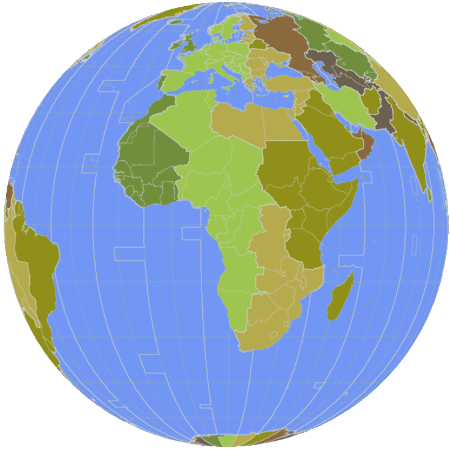
UTC+1: Algeria, Niger, Chad, Benin, Nigeria, Cameroon, Equatorial Guinea, Central African Republic, Gabon, Republic of the Congo, Western half of Democratic Republic of the Congo, Angola, and Namibia use West Africa Time (WAT) all year long.
UTC+1: Tunisia observed daylight time as recently as 2008. It currently does not observe daylight time.
UTC+1: Morocco and Western Sahara observe daylight time year-round except during the 30 days of Ramadan. It uses West Africa Time (WAT) [UTC+1] for eleven months and Greenwich Mean Time [UTC+0] for 30 days. Daylight time for 2021 is probably from April 11, 2021 to May 16, 2021, depending upon the sighting of the first crescent moon. Note that each year Ramadan begins approximately 11 days earlier than the preceding year.
UTC+0: Canary Islands observe Western European Summer Time (WEST) [UTC+1] beginning the last Sunday of March, and resumes Western European Time (WET) on the last Sunday of October.
UTC+0: Mauritania, Mali, Senegal, The Gambia, Guinea-Bissau, Guinea, Sierra Leone, Liberia, Côte d'Ivoire, Burkina Faso, Ghana and Togo use Greenwich Mean Time (GMT) all year long.
UTC-1: Cape Verde does not observe daylight time.
Europe
UTC+3: Belarus uses Moscow Standard Time (MSK).
UTC+3: Turkey formerly used Eastern European Time, changing to daylight time in the summer along with its neighbors. However, since 2016 it has remained on Turkey Time (TRT).
UTC+2: Finland, Estonia, Latvia, Lithuania, Ukraine, Moldova, Romania, Bulgaria, Greece, Cyprus, and Northern Cyprus observe Eastern European Summer Time (EEST) [UTC+3] beginning the last Sunday of March, and resume Eastern European Time (EST) on the last Sunday of October.
UTC+1: Sweden, Norway, Denmark, Poland, Germany, Slovakia, Czechia, Hungary, Austria, Serbia, Croatia, Slovenia, Bosnia and Herzegovina, Kosovo, Montenegro, Macedonia, Albania, Netherlands, Belgium, Luxembourg, Switzerland, Italy, France, Andorra, Spain and Malta observe Central European Summer Time (CEST) [UTC+2] beginning the last Sunday of March, and resume Central European Time (CET) on the last Sunday of October.
UTC+0: The United Kingdom observes British Summer Time (BST) [UTC+1] beginning the last Sunday of March, and resumes Greenwich Mean Time (GMT) on the last Sunday of October.
UTC+0: Portugal observes Western European Summer Time (WEST) [UTC+1] beginning the last Sunday of March, and resumes Western European Time (WET) on the last Sunday of October.
UTC+0: Ireland observes Irish Summer Time (IST) [UTC+1] beginning the last Sunday of March, and resumes Greenwich Mean Time (GMT) on the last Sunday of October.
UTC+0: Iceland uses Greenwich Mean Time (GMT) all year long.
UTC-1: The Azores observes daylight time [UTC-0] beginning the last Sunday of March, and resumes standard time [UTC-1] on the last Sunday of October.
North America
UTC+0: The weather station at Danmarkshavn on Greenland uses Greenwich Mean Time (GMT) all year long.
UTC-1: The settlement of Scoresbysund on Greenland observes daylight time [UTC+0] beginning the last Sunday of March, and resumes Greenwich Mean Time (GMT) on the last Sunday of October.
UTC-3: Nuuk, the capital of Greenland, observes daylight time [UTC-2] beginning the last Sunday of March, and resumes West Greenland Time (WGT) on the last Sunday of October.
UTC-3: The French territory of Saint Pierre and Miquelon observes daylight time [UTC-2] beginning the second Sunday of March and resumes standard time [UTC-3] on the first Sunday of November.
UTC-3:30 Newfoundland and Labrador observes Newfoundland Daylight Time (NDT) [UTC-2:30] beginning the second Sunday of March and resumes Newfoundland Standard Time (NST) on the first Sunday of November.
UTC-4: Thule Air Base, in northern Greenland, observes Atlantic Daylight Time (ADT) [UTC-3] beginning the second Sunday of March and resumes Atlantic Standard Time (AST) on the first Sunday of November.
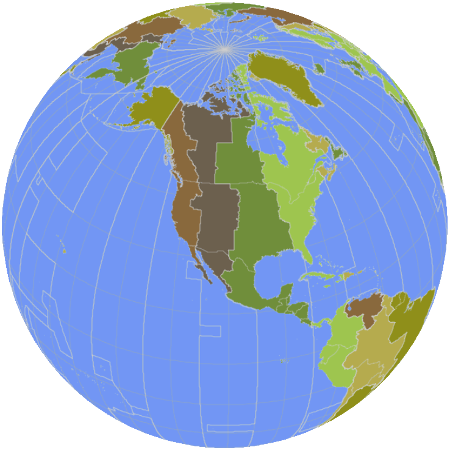
UTC-4: Eastern Quebec observes Atlantic Daylight Time (ADT) [UTC-3] beginning the second Sunday of March and resumes Atlantic Standard Time (AST) on the first Sunday of November.
UTC-4: The Blanc-Sablon portion of Quebec does not observe daylight saving time.
UTC-5: Western Quebec, Eastern Ontario, and Eastern Nunavut observes Eastern Daylight Time (EDT) [UTC-4] beginning the second Sunday of March and resumes Eastern Standard Time (EST) on the first Sunday of November.
UTC-5: The Eureka and Coral Harbor portions of Nunavut, and the Atikokan and Pickle Lake portions of Ontario, do not observe daylight saving time.
UTC-5: The eastern region of the USA observes Eastern Daylight Time (EDT) [UTC-4] beginning the second Sunday of March and resumes Eastern Standard Time (EST) on the first Sunday of November.
UTC-6: Western Ontario, Manitoba, and Central Nunavut observes Central Daylight Time (CDT) [UTC-5] beginning the second Sunday of March and resumes Central Standard Time (CST) on the first Sunday of November.
UTC-6: Saskatchewan remains on Central Standard Time (CST) all year long.
UTC-6: The central region of the USA observes Central Daylight Time (CDT) [UTC-5] beginning the second Sunday of March and resumes Central Standard Time (CST) on the first Sunday of November.
UTC-7: Alberta, Northwest Territories, and Western Nunavut observes Mountain Daylight Time (MDT) [UTC-6] beginning the second Sunday of March and resumes Mountain Standard Time (MST) on the first Sunday of November.
UTC-7: Yukon, and the Fort Nelson and Fort St. John portions of British Columbia, and the town of Creston, remains on Mountain Standard Time (MST) all year long.
UTC-7: The Rocky Mountain states of the USA observes Mountain Daylight Time (MDT) [UTC-6] beginning the second Sunday of March and resumes Mountain Standard Time (MST) on the first Sunday of November.
UTC-7: Arizona remains on Mountain Standard Time (MST) all year long, except the portion which is the Navajo Nation, which observes Mountain Daylight Time (MDT).
UTC-8: British Columbia observes Pacific Daylight Time (PDT) [UTC-7] beginning the second Sunday of March and resumes Pacific Standard Time (MST) on the first Sunday of November.
UTC-8: Pacific coastal state of the USA observes Pacific Daylight Time (PDT) [UTC-7] beginning the second Sunday of March and resumes Pacific Standard Time (MST) on the first Sunday of November.
UTC-9: Alaska observes Alaska Daylight Time (AKDT) [UTC-8] beginning the second Sunday of March and resumes Alaska Standard Time (AKST) on the first Sunday of November. All of Alaska is in the same timezone.
Central America
UTC-5: Panama does not observe daylight time.
UTC-5: The Mexican state of Quintana Roo does not observe daylight saving time.
UTC-6: Guatemala, Honduras, Nicaragua, Belize, El Salvador and Costa Rica currently do not observe daylight time.
UTC-6: The central states of Mexico observe Central Zone Daylight Time [UTC-5] beginning the first Sunday of April, and resumes Central Zone Standard Time on the last Sunday of October.
UTC-7: The Mexican states of Chihuahua, Nayarit, Sonora, Sinaloa and Baja California Sur observe Pacific Zone Daylight Time [UTC-6] beginning the first Sunday of April, and resumes Pacific Zone Standard Time on the last Sunday of October.
UTC-7: Sonora does not observe daylight time. It remains on Pacific Zone Standard Time all year long.
UTC-8: Baja California observes Northwest Zone Daylight Time [UTC-7] beginning the first Sunday of April, and resumes Northwest Zone Standard Time on the last Sunday of October.
Caribbean
UTC-4: Trinidad and Tobago; Grenada; Saint Vincent and the Grenadines; Barbados; Saint Lucia; the French department of Martinique; Dominica; Montserrat; Antigua and Barbuda; St. Kitts and Nevis; Saint-Martin; Anguilla; US Virgin Islands; British Virgin Islands; Puerto Rico; Dominican Republic; and the Dutch Caribbean islands of Aruba, Bonaire and Curaçao, use Atlantic Standard Time (AST) throughout the year.
UTC-4: Bermuda observes Atlantic Daylight Time (ADT) [UTC-3] beginning the second Sunday of March and resumes Atlantic Standard Time (AST) on the first Sunday of November.
UTC-5: Cuba observes Cuba Daylight Time (CDT) [UTC-4] beginning the second Sunday of March and resumes Cuba Standard Time (CST) on the first Sunday of November.
UTC-5: Haiti; Turks and Caicos Islands; and the Bahamas, observe Eastern Daylight Time (EDT) [UTC-4] beginning the second Sunday of March and resume Eastern Standard Time (EST) on the first Sunday of November.
UTC-5: Jamaica and Cayman Islands use Eastern Standard Time all year long.
South America
UTC-2: The Brazilian archipelago of Fernando de Noronha (FNT), and the research station on Saint Peter and Saint Paul do not observe daylight time.
UTC-2: The British Overseas Territory of South Georgia (GST) and the South Sandwich Islands do not observe daylight time.
UTC-3: The Falkland Islands currently use Falkland Islands Standard Time [UTC-3] all year long. As recently as 2010 however, this was referred to as Falkland Islands Summer Time (FKST) [UTC−3], while official time was called Falkland Islands Time (FKT) [UTC-4].
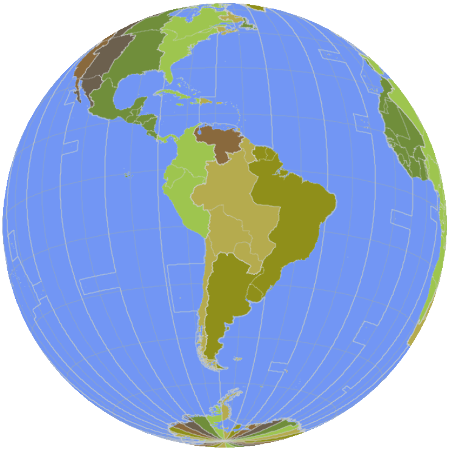
UTC-3: Suriname (SRT) and French Guiana (GFT) do not use daylight time.
UTC-3: Eastern Brazil uses Brasilia Time (BRT) which is observed year-round. It observed daylight time as recently as 2019.
UTC-3: All of Argentina follows Argentina Time (ART) all year long. However, as recently as 2009, some of the eastern provinces observed daylight time in the summer months, even though most of the western provinces did not.
UTC-3: Uruguay currently uses Uruguay Time (UYT) all year long. As recently as 2015 it alternated between Uruguay Standard Time [UTC-3] and Uruguay Summer Time [UTC-2] as appropriate for the southern hemisphere.
UTC-4: Venezuela uses Venezuela Time (VET) all year long. Prior to May 1, 2016 Venezuela time was on UTC-4:30.
UTC-4: Guyana (GYT) and Bolivia (BOT) use standard time all year long.
UTC-4: Central Brazil uses Amazon Time (AMT) which is observed year-round. It observed daylight time as recently as 2019.
UTC-4: Paraguay uses Paraguay Summer Time (PYST) [UTC-3] beginning the first Sunday of October, and resumes Paraguay Time (PYT) the first Sunday on or after March 22nd.
UTC-4: Chile uses Chile Daylight Time (CLDT) [UTC-3] beginning the first Sunday on or after September 2nd, and resumes Chile Standard Time (CLT) the first Sunday on or after April 2nd.
UTC-5: Colombia uses Colombia Time (COT) all year long. It experimented with daylight time only during the period 1992-93.
UTC-5: The western Brazilian state of Acre uses Acre Time (ACT) all year long. In 2008 the time zone was abolished and Acre briefly used UTC-4. In 2013 the UTC-5 time zone was reinstated and continues to be in use today. Unlike the rest of Brazil, it has never observed daylight time rules.
UTC-5: Ecuador uses Ecuador Time (ECT) all year long. It experimented with daylight time only during the period 1992-93.
UTC-5: Peru uses Peru Time (PET) all year long. It previously observed daylight time in the years 1938-40, 1986-87, 1990 and 1994.
Eastern Pacific
UTC-6: Galápagos Islands (GALT), a province of Ecuador, does not observe daylight time.
UTC-6: Easter Island uses summer time (EASST) [UTC-5] beginning the first Sunday on or after September 2nd, and resumes standard time (EAST) the first Sunday on or after April 2nd. Easter Island is a part of Chile, which chose to place the island in UTC-6 instead of UTC-7 in order to make it easier to administer.
UTC-10: Hawaii uses Hawaii Standard Time (HST) throughout the year.
UTC-11: American Samoa uses Samoa Standard Time (SST) all year long.
Antarctica

Antarctica has 25 time zones, although only ten of them have research stations. The notable extra zone is UTC+12, called appropriately, "South Pole Time".
Data files for software developers
Time zone data and daylight time rules are administered by the Internet Assigned Numbers Authority. The Time Zone Database is available for download from IANA.
This database is maintained by volunteers who submit changes that they learn about through local news. Every country in the world is free to use whatever timezone and whatever daylight rules they wish, and they are under no obligation to inform IANA about any changes. Volunteers are needed to keep the database up-to-date.
The encoding for the database is not easy to work with. Here's a sample of the rules for Jordan, for the years 2014 to the present time:
Jordan 2014 max Mar lastThu 24:00 1:00 S
Jordan 2014 max Oct lastFri 0:00s 0 -
The rules for the year 2021 have been derived from these. They look like this in tab-delimited form:
+ 2 0 2021-01-01T00:00:00.000Z 2021-03-25T23:59:59.000Z EET Jordan Asia/Amman
+ 3 0 2021-03-26T00:00:00.000Z 2021-10-28T23:59:59.000Z EEST Jordan Asia/Amman
+ 2 0 2021-10-29T00:00:00.000Z 2021-12-31T23:59:59.000Z EET Jordan Asia/Amman
They are also available as JSON, like this:
"zoneName": "Asia/Amman",
"fromDate": "2021-01-01T00:00:00.000Z",
"thruDate": "2021-12-31T23:59:59.000Z",
"utcOffsetDirection": "+",
"utcOffsetHours": 2,
"utcOffsetMinutes": 0,
"utcOffsetSeconds": 0,
"colloquialAbbreviation": "EE%sT",
"ruleName": "Jordan",
"daylightRecords": [
{
"ruleName": "Jordan",
"fromDate": "2021-01-01T00:00:00.000Z",
"thruDate": "2021-03-25T23:59:59.000Z",
"utcOffsetDirection": "+",
"utcOffsetHours": 2,
"utcOffsetMinutes": 0,
"colloquialAbbreviation": "EET"
},
{
"ruleName": "Jordan",
"fromDate": "2021-03-26T00:00:00.000Z",
"thruDate": "2021-10-28T23:59:59.000Z",
"utcOffsetDirection": "+",
"utcOffsetHours": 3,
"utcOffsetMinutes": 0,
"colloquialAbbreviation": "EEST"
},
{
"ruleName": "Jordan",
"fromDate": "2021-10-29T00:00:00.000Z",
"thruDate": "2021-12-31T23:59:59.000Z",
"utcOffsetDirection": "+",
"utcOffsetHours": 2,
"utcOffsetMinutes": 0,
"colloquialAbbreviation": "EET"
}
]
Daylight saving time data files for 2021 can be obtained from the daylight-saving-time-2021 GitHub repo.
Time zone data visualization is available at timezone.earth.




